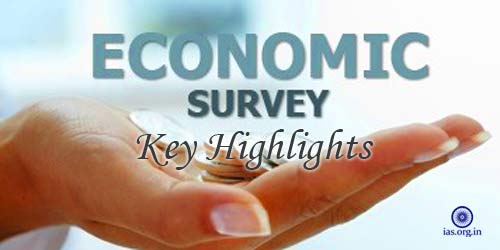The Economic Survey 2015-16, presented in Parliament, has described external environment as challenging but projected a GDP growth rate of 7 to 7.75% in the next fiscal that could achieve the target of 8% in a couple of years. The Survey has also emphasized on carrying forward the reform to obtain macroeconomic stability.
The Economic Survey is presented in parliament as a pre-budget annual exercise during Budget Session. The Economic Survey is aimed at providing statistical analysis of economy during last fiscal by the Ministry of Finance.
Despite challenges and lower than projected GDP growth rate during 2015-16, the Survey has claimed, “the fiscal deficit target of 3.9% of GDP seems achievable.
Read Also:Union Budget of India 2016-17 – Key Features
The Economic Survey claimed that after achieving 7.2% economic growth in 2014-15, the growth in economy will be 7.6%, the fastest in the world, in the current fiscal. However, putting a note of caution it said that if the world economy remained weak, India’s growth would face considerable setbacks.
According to the Economic Survey, on the domestic front, two factors – if the Seventh Pay Commission is implemented and return of normal monsoon – can boost consumption through increased spending from higher wages allowances of government workers.
Along with this, the Economic Survey, mentioning three downside risks, said that trouble in global economy could worsen the prospect of experts; contrary to expectations, oil price rise would enhance the pull from consumption; and the most serious risk is the combination of these two.
The Economic Survey informed, “One of the most critical short term challenges confronting the Indian economy is the twin balance sheet problem – the impaired financial positions of the public sector banks and some corporate houses. The twin balance sheet challenge is a major impediment to provide investment and a full fledged economic recovery.”
Must Read: Both Rail Budget and Union Budget Go Green
The Economic Survey proposed that in order to obtain its long term potential growth rate of around 8 to 10%, India should endorse a three-pronged strategy by encouraging competition and investing health and education and in the process not neglecting agriculture.
The Survey suggests that India must plan for a major currency readjustment in Asia in the wake of a similar adjustment in China for it considers this as one tail-risk scenario.
The Economic Survey asked the banks, mentioning RBI’s appeal, to value their assets as for as possible to be true value(Recognition). The Survey further advised that once Banks do so, their capital, as per the demands of the Banks, must be safeguarded via infusions of equity (Recapitalization).
The survey further stressed that, as per the wish of the government, the underlying stressed assets in the corporate sector must be sold or rehabilitated (Resolution).
The Economic Survey disclosed that, as everyone has been demanding, the future incentives for the private sector and corporates must be set right(Reform) to eschew a repetition of the problem.
The Economic Survey was prepared by the Chief economic adviser, Arvind Subramanian, of the Ministry of Finance.
Also Read: Salient Features of Railway Budget 2016



